This is my first summer in New York, and I have discovered something interesting. Just like most climates, the landscaping here goes dormant or dies off in the winter. Winter here is particularly long, so the entire area looks dead for much longer than the milder climates in the south or out west. However, due to deep soaking rains followed by warm, steamy days, landscaping, in this part of the country, quickly recovers in the summer, and it reaches jungle proportions in a matter of days. I have witnessed vine growth of over a foot in just a couple of days, and giant ferns can unfurl in an afternoon. I think doing a time-lapse photography experiment on the summer plants of New York would be fascinating.
Many of the landscaping plants here at BHH are new to me. In other words, I cannot always tell the intentional plantings from the weeds. Andy and I have very little collective knowledge about landscaping. We have mostly xeriscaping at our house in California. Andy recognizes that green plants are alive, and plants that are alive are good. He generally chooses one name for bushes, (“Look at that nice rose bush.”) and most flowers are called daisies. He knows this is not correct, but he loves teasing me. Andy cannot get over the genius of self-propelled lawnmower technology, but other than that, he is not a big fan of yard work.
My knowledge includes a handful of names for the plants and flowers of this region, the difference between annuals and perennials, and the necessity of keeping the landscaping from touching the wood siding on the house. I am just faking everything else.
Here is what the house looked like before:
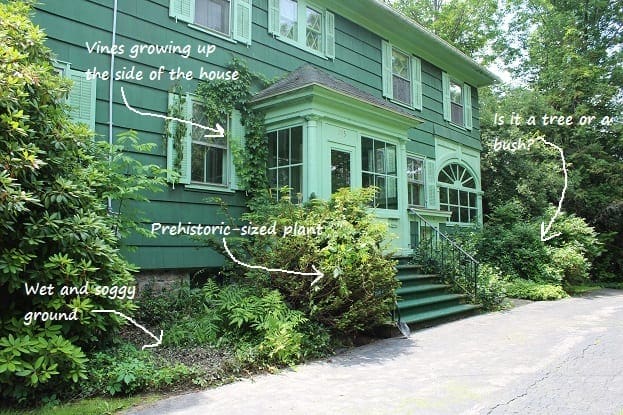
In the photo above, the bushes on either side of the staircase were woven in and out of the railings. The ground was wet and mushy because we recently had some electrical work done after a storm, and the ground got a bit trampled. The use of the space by the workers did not bother me at all, but the aftermath looked unsightly. Andy and I both loved the vines growing around the windows. We thought it looked rather charming. However, it is just not a good idea to let that happen. Vines send out little tendril roots that cling to everything, encourage mildew and degrade the paint and wood. That particular vine went from nothing to that size in less than two weeks.
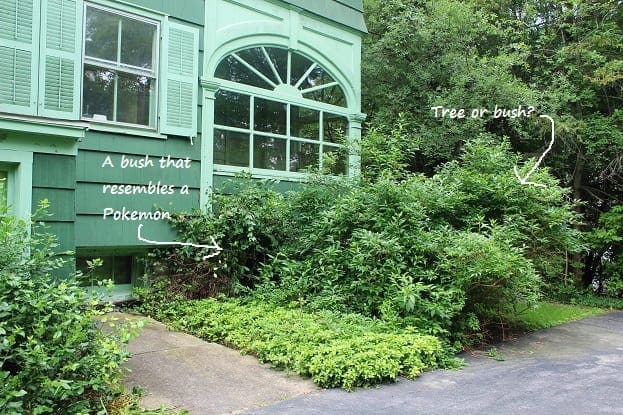
The photo above shows the cramped plants. Everything is touching each other and the house. The window is partially obscured.
The photo below better shows the window that was almost entirely covered.
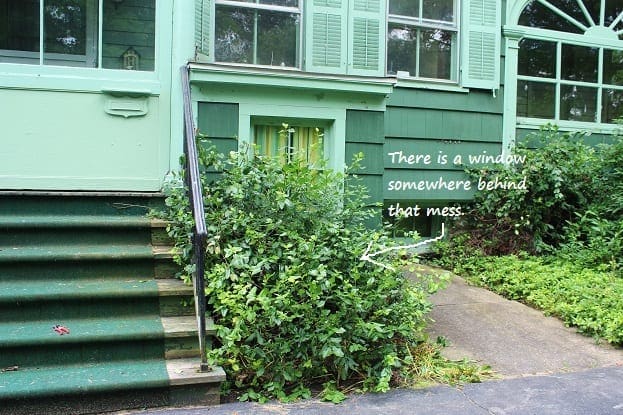
Armed with pruners, loppers, and a whole lot of ambition, I got to work. Andy was working on an inside project, so I tackled this one alone. My method was not fancy. I started by cutting from underneath to get the plant growth off the ground. Then, I chopped everything away that was touching the house. Finally, I shaped everything up a little. Shaping is my weakness. It seems to be a subjective art. Some people like landscaping uniform in size and shape. I like things to look a little wild.
I ran into a couple of problems along the way. After I hacked this bush away from the window, I discovered that it had been planted or had taken root right up against the house. The moisture from the plant had made the siding shingles very soft and mushy.

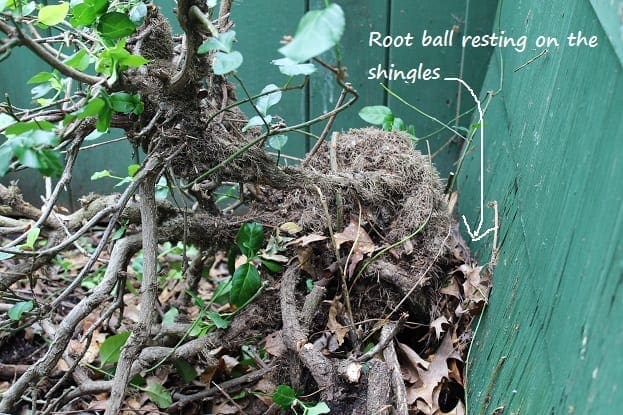
Andy and I conferred, and we decided to just remove the entire bush. On the opposite side of the sidewalk was a matching bush with a similar problem. It is labeled as the Pokemon bush in one of the earlier photos. Even though the Pokemon was touching the rock foundation instead of wood, I opted to remove it too. The landscaping on that side was crowded, and it was not a particularly attractive plant. (I do not choose you Poke-bush!)
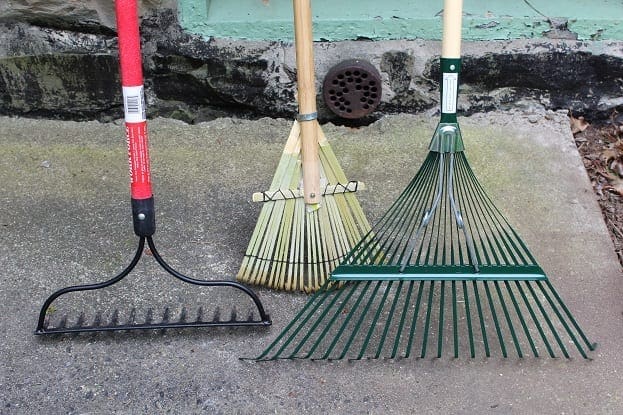
The entire job took around 6-7 hours from start to clean-up. In the process, I also had to run to the local hardware store for rakes, and to replace the pruners that broke.
Yes, I really bought three rakes. I considered it an investment since fall is coming. They each served a special purpose for this job. I used the bow rake and the shrub rake the most. Our local hardware store offers competitive pricing, so I did not mind making the investment all at once.
Here is the end result:


In the place of the bush that I removed, M. and I planted her zinnias and calendula that we started when we still lived in our rental home.
Next year, I think I would like to tear out the evergreen bush on the left side of the staircase, and plant matching bushes on both sides of the stairs. Rhododendron, Peonies, and even some varieties of roses grow well here. In addition, I will likely go back and clear out more ground cover on the left side. Where the ground is still soggy, I will lay some flagstone that I found around the yard. The stone will make a nice path for the person who reads the meter.
The entire job yielded 4-30 gallon paper lawn waste bags and a 3 foot X 15 foot pile of brush and branches for the city to chip up and haul away. For now, the jungle is tamed.
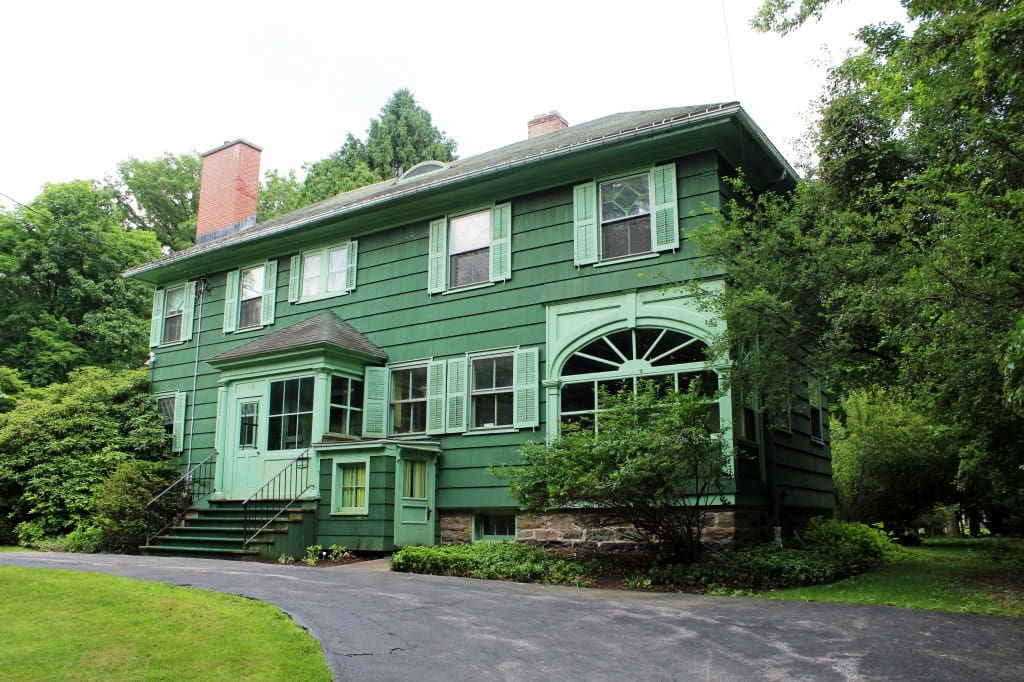
Total cost :: $55 (for rakes, pruners and paper lawn bags)


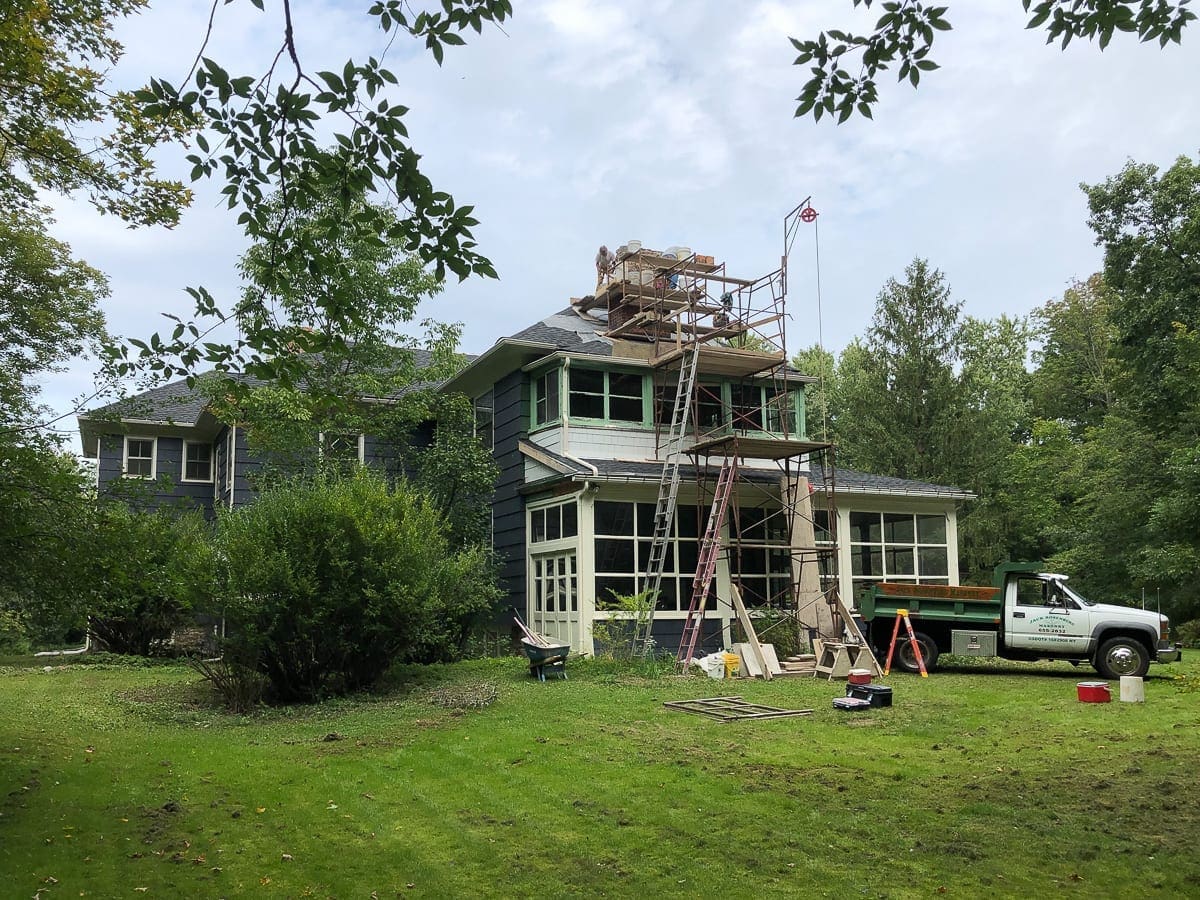
1 Comment
Jan Elizabeth
Looks much neater already!